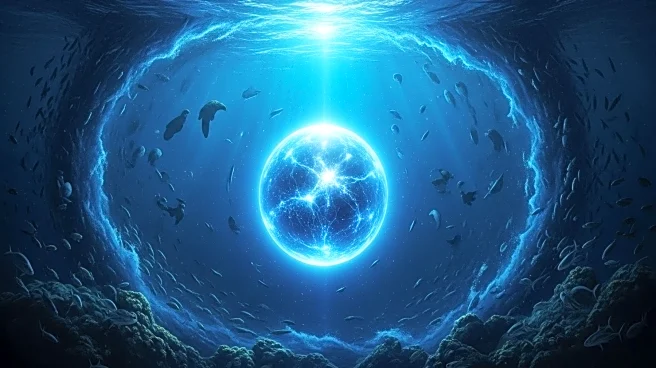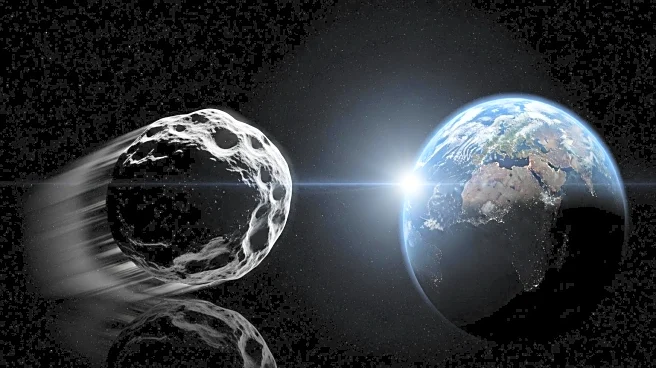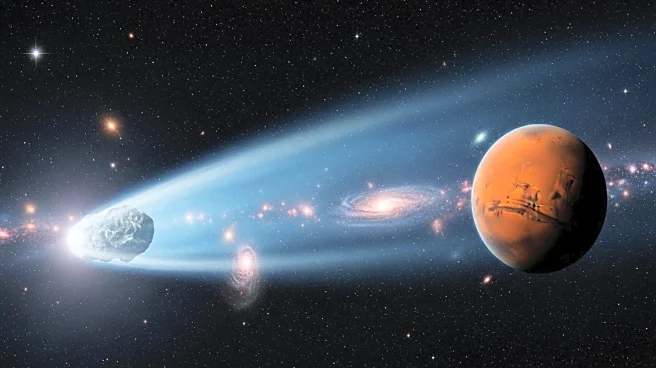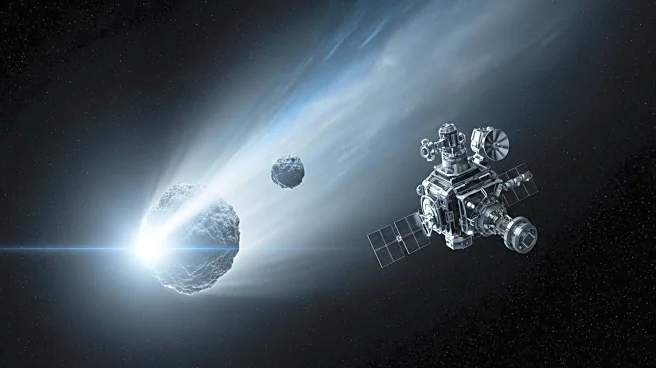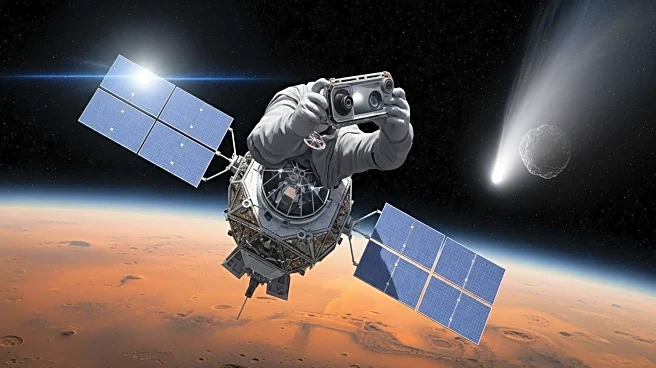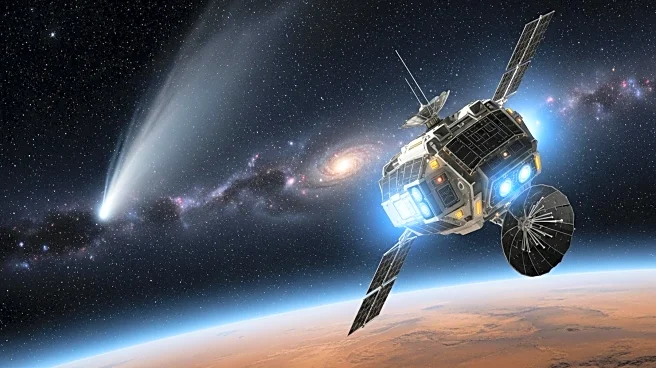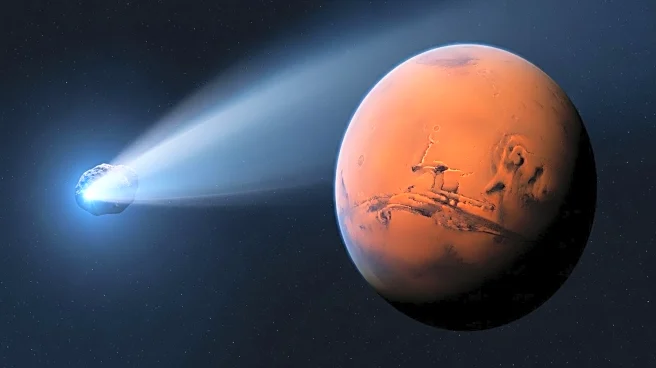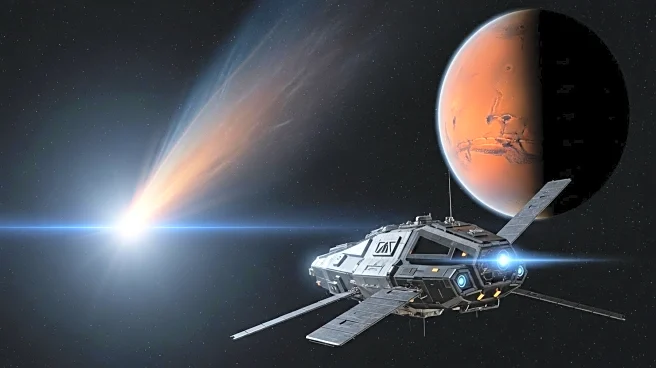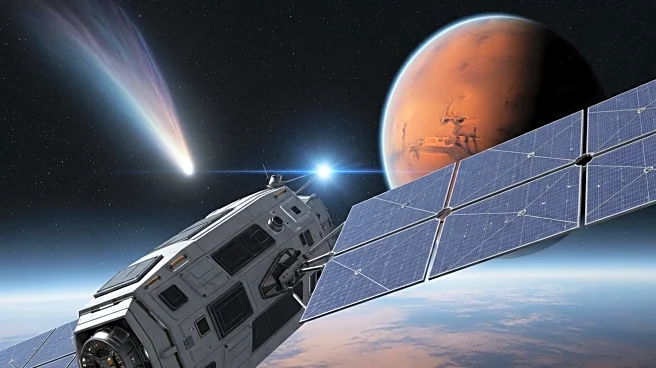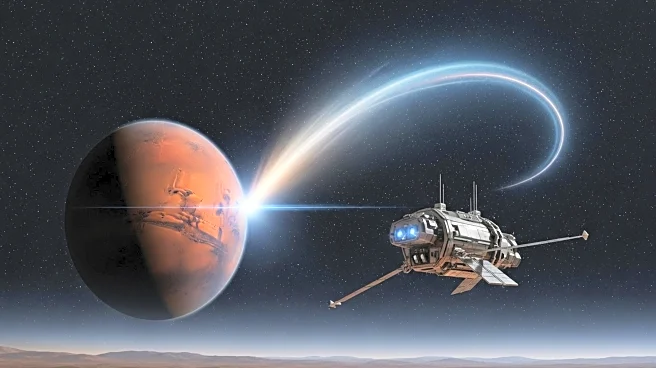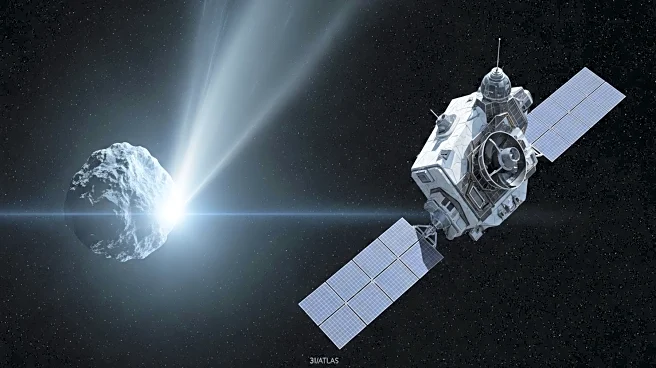What is the story about?
What's Happening?
Scientists have discovered a strange spike in beryllium-10 in the Pacific Ocean's seafloor, potentially indicating a nearby supernova explosion around 10 million years ago. Beryllium-10 is a radioactive isotope formed when cosmic rays strike Earth's atmosphere, and its presence in the seafloor is usually uniform. However, the anomaly suggests a significant cosmic event, possibly a supernova, occurred close to Earth. Researchers used data from the European Space Agency's Gaia survey to trace the paths of the Sun and nearby star clusters, finding a 68% chance of a supernova occurring within 326 light-years of the Sun during the time of the anomaly.
Why It's Important?
The potential link between the beryllium-10 anomaly and a supernova explosion could provide valuable insights into cosmic events and their impact on Earth. Understanding such phenomena is crucial for comprehending the history and evolution of our solar system and the universe. If confirmed, this discovery could enhance our knowledge of supernovae and their role in shaping cosmic environments. It also highlights the interconnectedness of cosmic events and terrestrial changes, offering a unique perspective on Earth's geological history.
What's Next?
Further research is needed to confirm the supernova hypothesis. Scientists plan to analyze samples from different locations to determine if the beryllium-10 spike is globally consistent, which would support a cosmic cause. If localized, other factors such as ocean currents may be responsible. Continued investigation will help unravel the mystery and potentially confirm the supernova origin of the anomaly.
AI Generated Content
Do you find this article useful?
